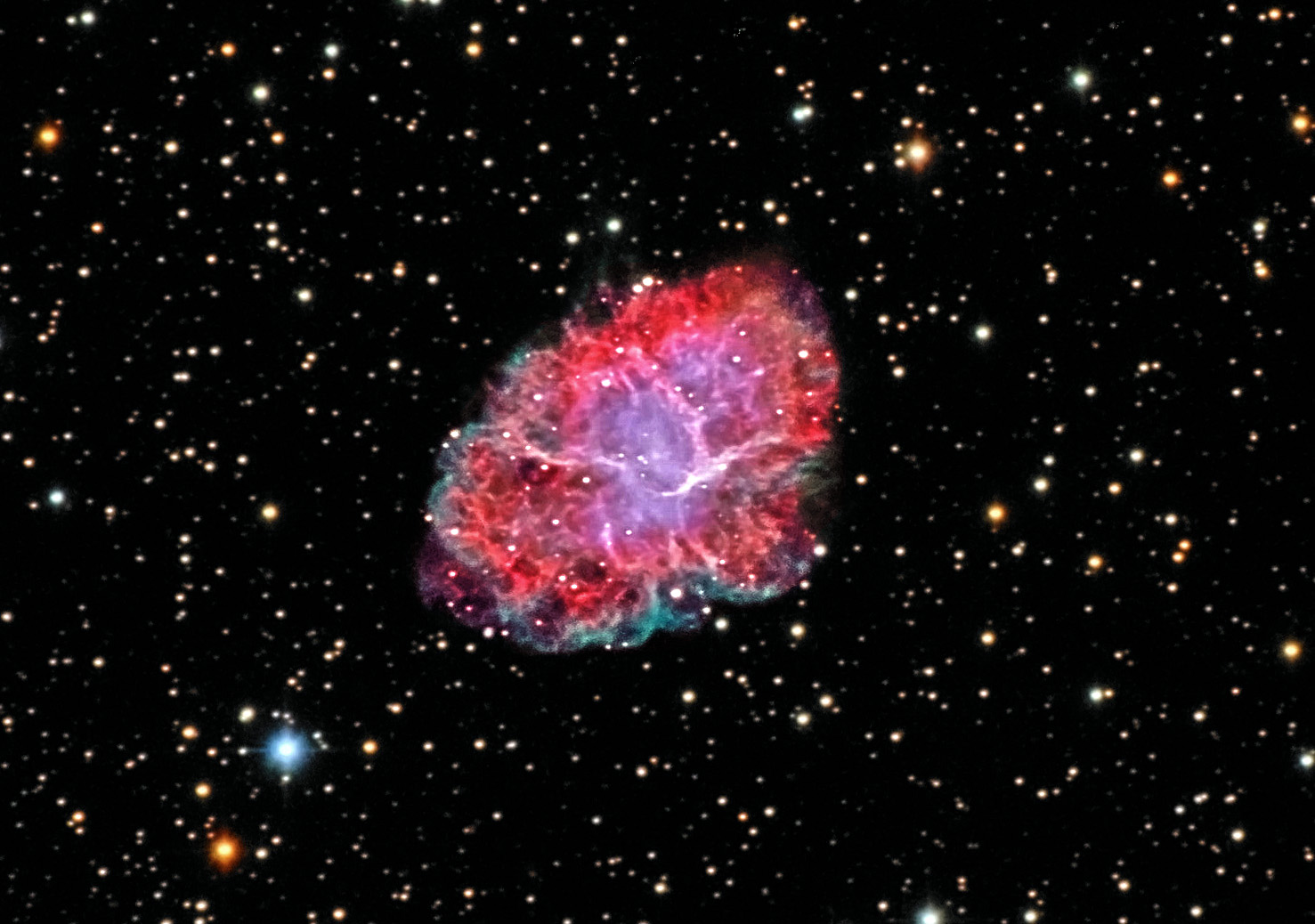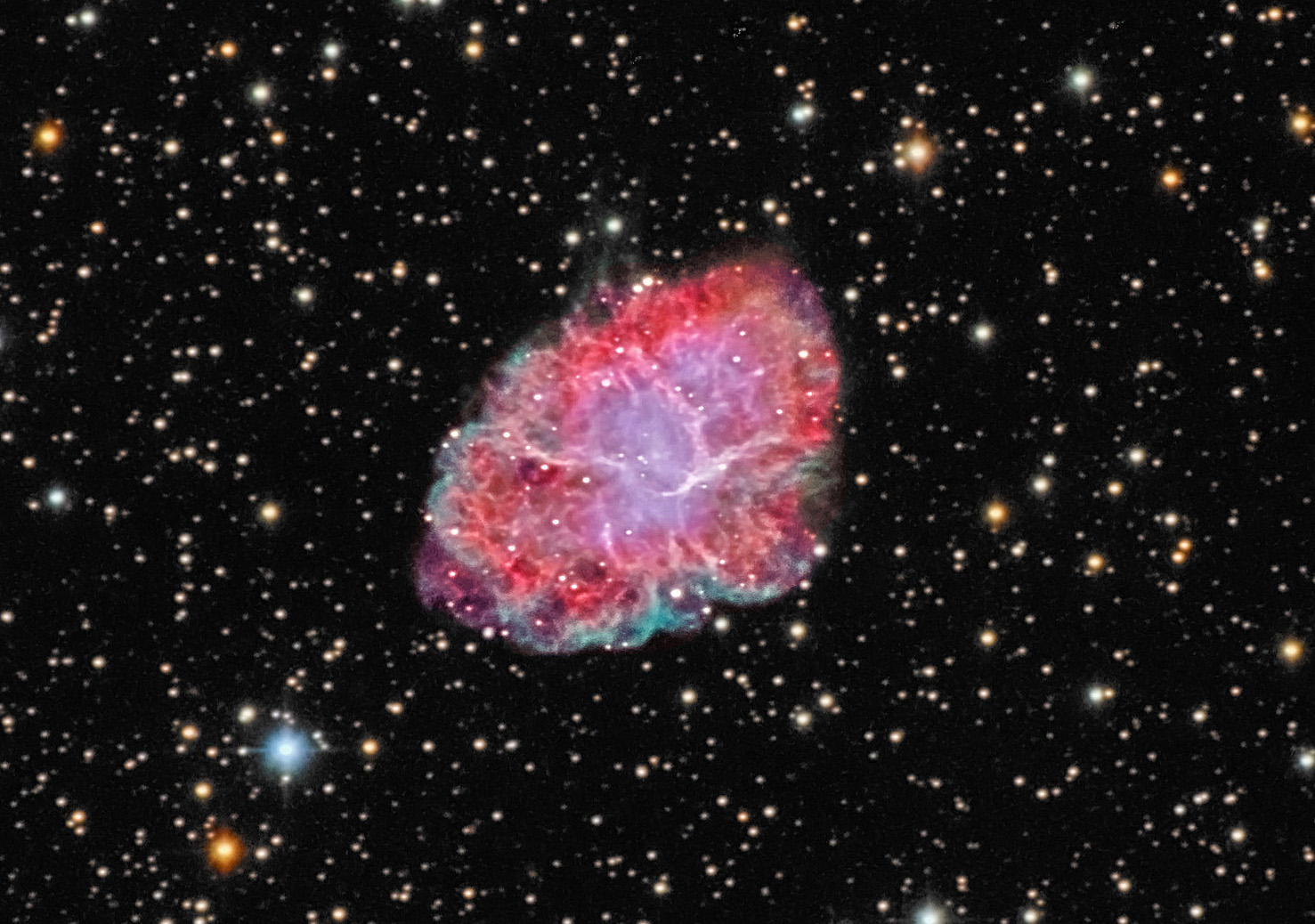|

M1: Crab Nebula -- version 2
The colorful Crab Nebula (M1: supernova remnant) was first seen by the
Chinese in 1054 AD as a supernova explosion that decayed into the
supernova remnant we see today. It lies in the constellationTaurus 6,500
lightyears from Earth with a diameter of 11 ly. At the center of the
nebula lies the Crab Pulsar, a neutron star of 17–19 miles across, which
emits pulses of radiation from gamma rays to radio waves. The Crab Nebula
consists of a broadly oval-shaped mass of filaments of the progenitor
star's atmosphere, and consist largely of ionized helium and hydrogen,
along with carbon, oxygen, nitrogen, iron, neon and sulfur.
M1 was photographed by James Foster with a Sky-Watcher Quattro 250P
(10-inch f/4 Newtonian telescope) and ZWO ASI6200MM-Pro monochrome camera
through Hydrogen-alpha, Oxygen III, and RGB filters for a total exposure
time of 9.5 hours. It was post-processed and cropped in Photoshop by me.
file:
M1-JRFHOIIIRGB3Anewt-1acr2a.jpg
Click
here for
higher resolution photo
Photographic Data
Date:
early November, 2024
telescope:
Sky-Watcher
Quattro 250P (10-inch f/4 Newtonian telescope with coma corrector)
focal ratio f/4
FL=
1,000 mm
mount:
iOptron CEM60
off-axis guiding
imaging
camera:
ZWO ASI6200MM-Pro
filters:
Hydrogen-alpha 3nm (238 min),
Oxygen-III 3nm (161 min) and Red
(100 sec X 33), Green (100 sec X
34),
Blue (100 sec X 36).
Total integration time: 9.6
hoursfilters:
photographic site:
Pinon Pines Estates (Frazier Park
California)
(Bortle 4 at 5,500 ft elevation) |

